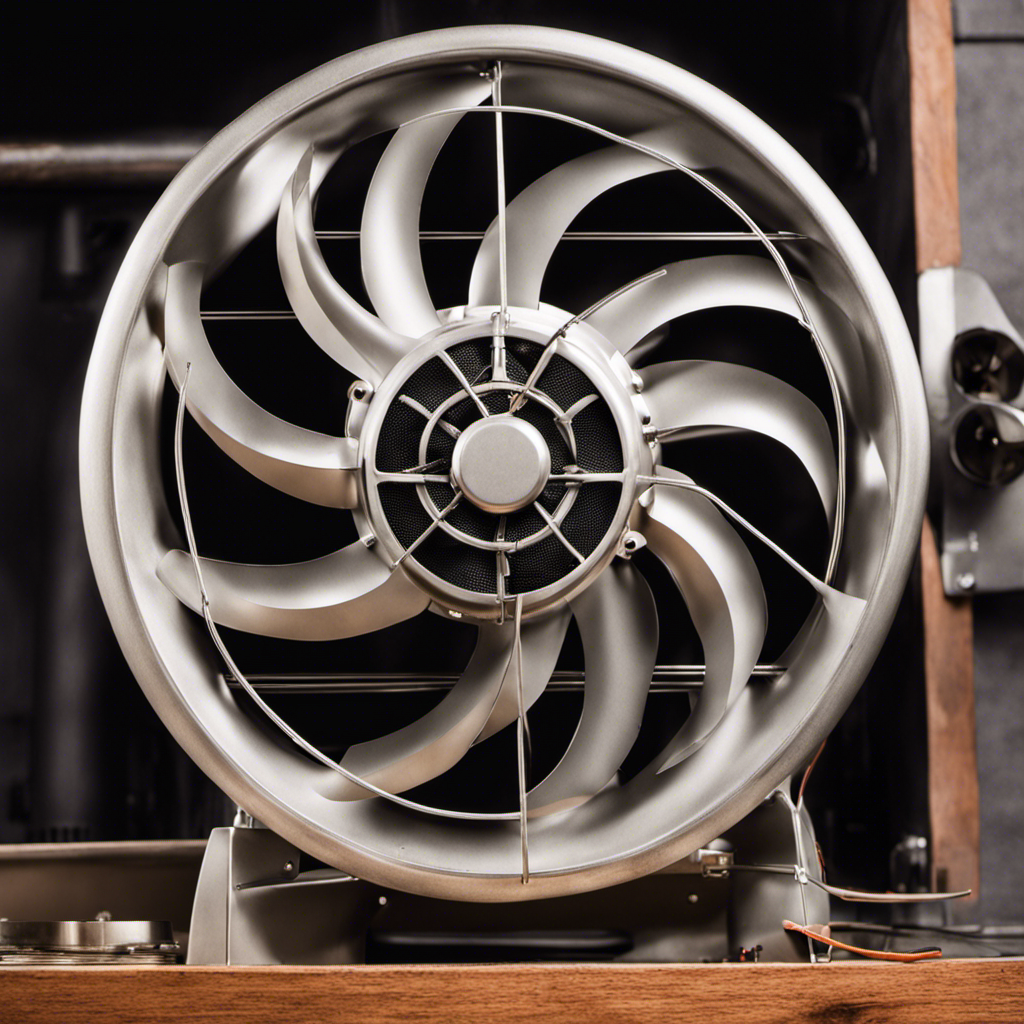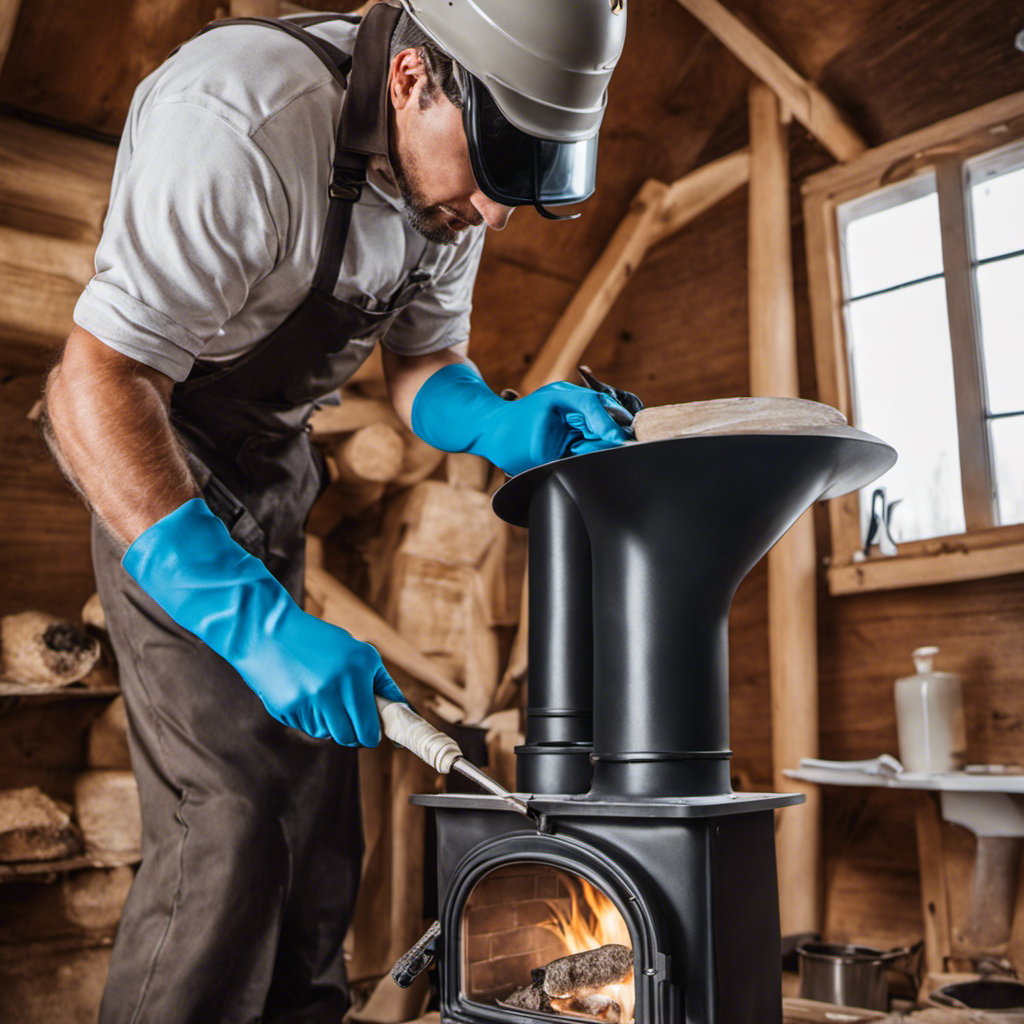As a homeowner, it is essential to make sure that my wood stove is working efficiently and meets current regulations. It’s like having a dependable companion providing warmth on cold nights.
But how can I be certain it meets all the necessary requirements? In this article, I will walk you through the process of understanding code requirements, checking for certification labels, evaluating clearance distances, considering emissions standards, and consulting with a professional inspector.
Together, we’ll navigate the intricate world of wood stove compliance.
Key Takeaways
- Follow local building codes and ensure proper installation
- Research the reputation and certifications of the wood stove brand
- Evaluate the safety features and clearance requirements of the stove
- Consider emissions standards and the benefits of a wood stove
Understanding Code Requirements
I understand the current code requirements for wood stoves. When it comes to the installation process, it’s crucial to follow the guidelines set by local building codes. Proper installation ensures the safe and efficient operation of the wood stove. This includes proper clearance from combustible materials, such as walls and floors, as well as the correct size and type of chimney or venting system. Additionally, there may be specific requirements regarding the placement of the stove in relation to windows and doors.

Maintenance requirements are also an important consideration. Regular cleaning and inspection of the stove and chimney are necessary to prevent the build-up of creosote, a highly flammable substance. It’s recommended to have the chimney professionally cleaned at least once a year. Other maintenance tasks may include checking and replacing gaskets, cleaning or replacing filters, and ensuring proper airflow.
Checking for Certification Labels
Can I easily identify certification labels on wood stoves to ensure they meet current safety standards?
When it comes to purchasing a wood stove, it’s crucial to prioritize safety. Luckily, identifying certification labels is a straightforward process.
The first step is to conduct thorough research on the brand’s reputation. Look for customer reviews, testimonials, and ratings. This will give you an idea of the company’s commitment to safety and quality.
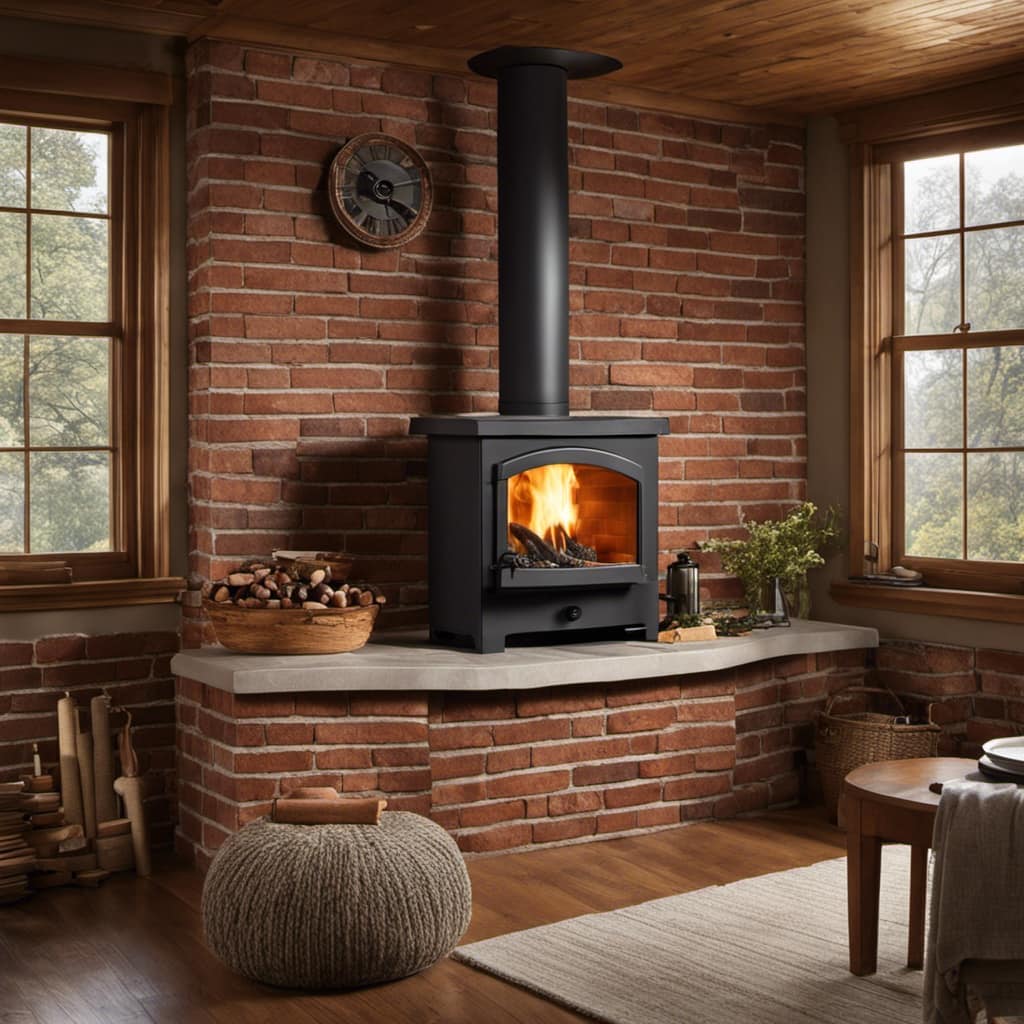
Additionally, comparing stove efficiency is essential. Look for stoves with high efficiency ratings, as this indicates that they burn fuel more effectively and produce less harmful emissions.
Once you have narrowed down your options, check for certification labels such as the EPA certification label or the UL mark, which ensure that the stove meets current safety standards.
Evaluating Clearance Distances
Evaluating clearance distances is crucial when determining the safe placement of a wood stove in your home. To ensure the safety of your family and property, it’s important to consider the following factors:
Evaluating safety features:
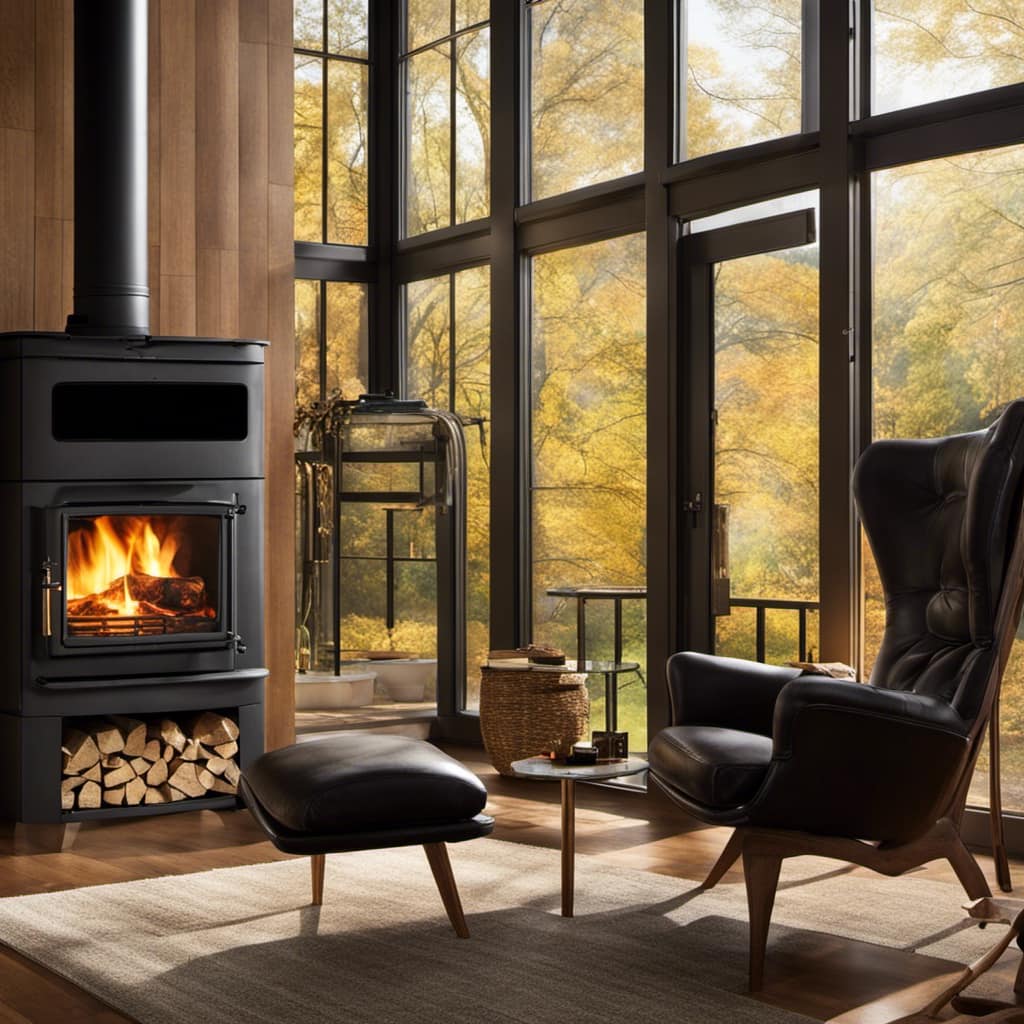
Look for stoves that have heat shields or insulation to reduce the risk of overheating nearby combustible materials.
Check if the stove has a built-in spark arrestor to prevent sparks from escaping and causing potential fire hazards.
Consider stoves with automatic shut-off features that activate when the stove reaches unsafe temperatures.
Measuring heat output:

Calculate the heat output required for your space to ensure the stove is capable of providing sufficient warmth.
Consider the stove’s efficiency rating to determine how effectively it converts fuel into heat.
By thoroughly assessing these factors, you can make an informed decision about the placement of your wood stove while prioritizing safety.
Considering emissions standards is also essential, as it ensures that your wood stove meets environmental regulations and contributes to cleaner air quality.
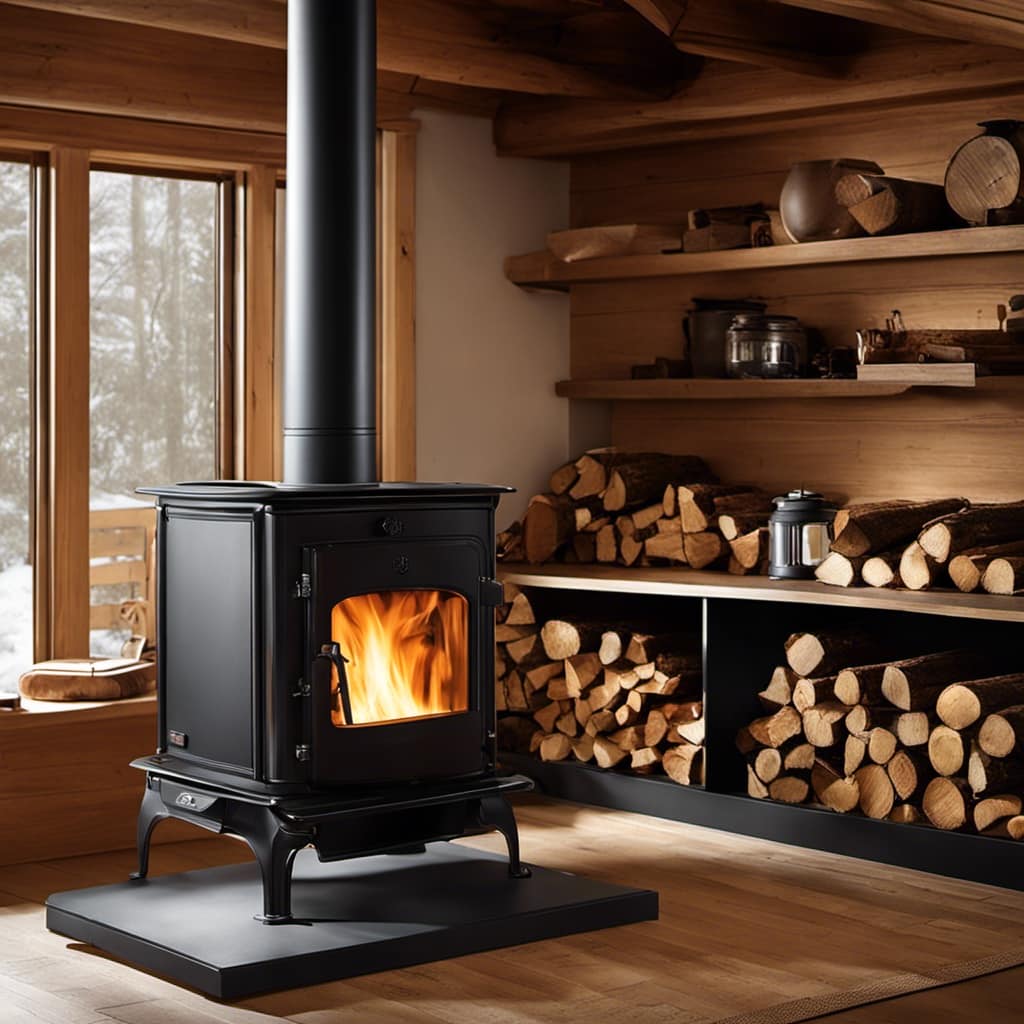
Considering Emissions Standards
Meeting emissions standards is crucial when selecting a wood stove to ensure it reduces pollution and promotes cleaner air quality. When evaluating efficiency levels, it’s important to consider the stove’s emissions output. Researching local regulations is also vital to ensure compliance with any specific emission standards in your area. By selecting a wood stove that meets or exceeds these standards, you can help minimize the environmental impact and contribute to cleaner air quality.
In addition, an efficient wood stove will also save you money on fuel costs in the long run. To ensure that your wood stove is up to code and meets emissions standards, consulting with a professional inspector is recommended. They can provide expert guidance and ensure that your wood stove installation is safe and compliant with all relevant regulations.
Consulting With a Professional Inspector
How soon should I schedule an appointment with a professional inspector to ensure my wood stove meets current code requirements?
It’s crucial to verify the installation safety and assess the chimney condition of your wood stove. To ensure the utmost safety and compliance, I recommend scheduling an appointment with a professional inspector promptly.
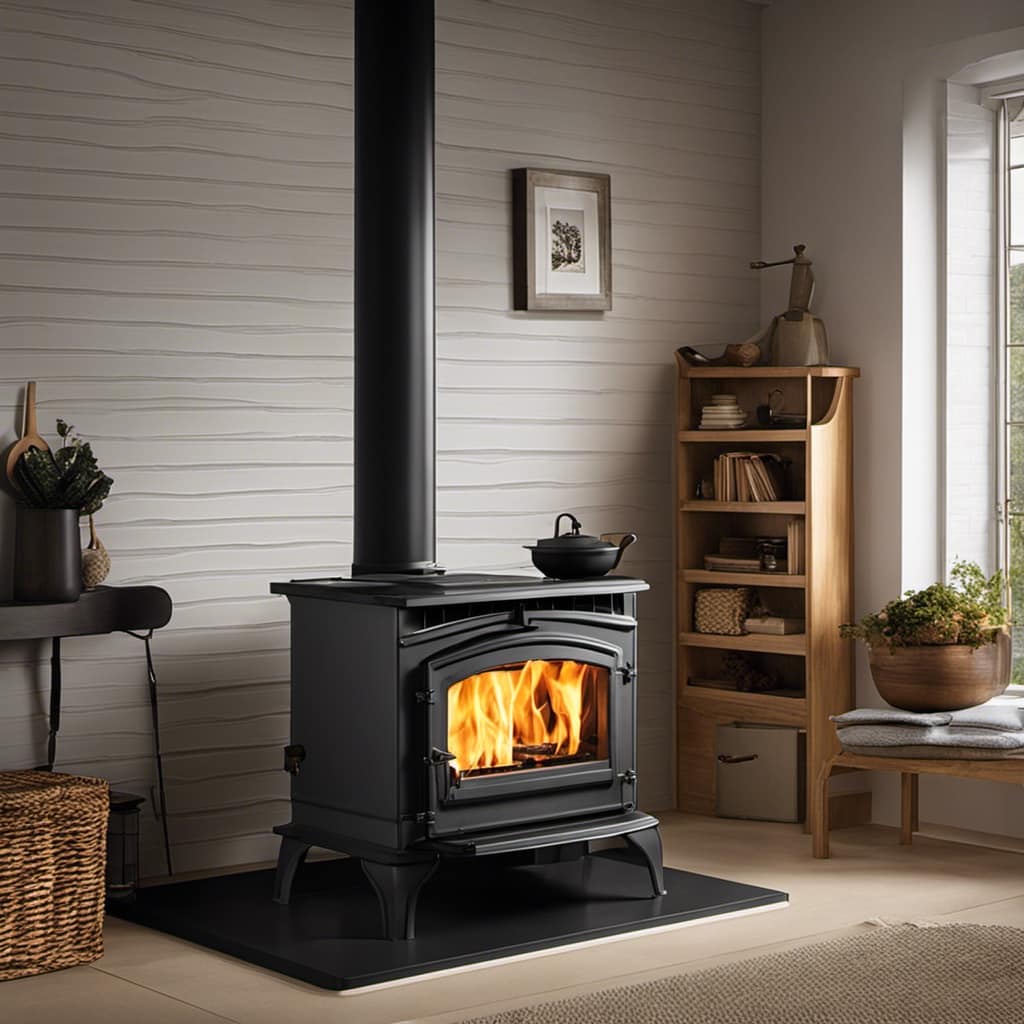
Here are three key reasons why:
Verification of Installation Safety: A professional inspector will thoroughly examine the installation of your wood stove, ensuring that it meets all current safety standards and guidelines. This includes assessing proper clearance from combustible materials, adequate ventilation, and secure connections to the chimney.
Assessment of Chimney Condition: The inspector will inspect the condition of your chimney, checking for any cracks, blockages, or damage that could potentially compromise the safety of your wood stove. They’ll also assess the chimney’s functionality, ensuring proper draft and airflow.
Compliance with Current Code Requirements: By consulting with a professional inspector, you can ensure that your wood stove meets all the necessary code requirements. They’re well-versed in the latest regulations and can provide expert guidance on any necessary upgrades or modifications.
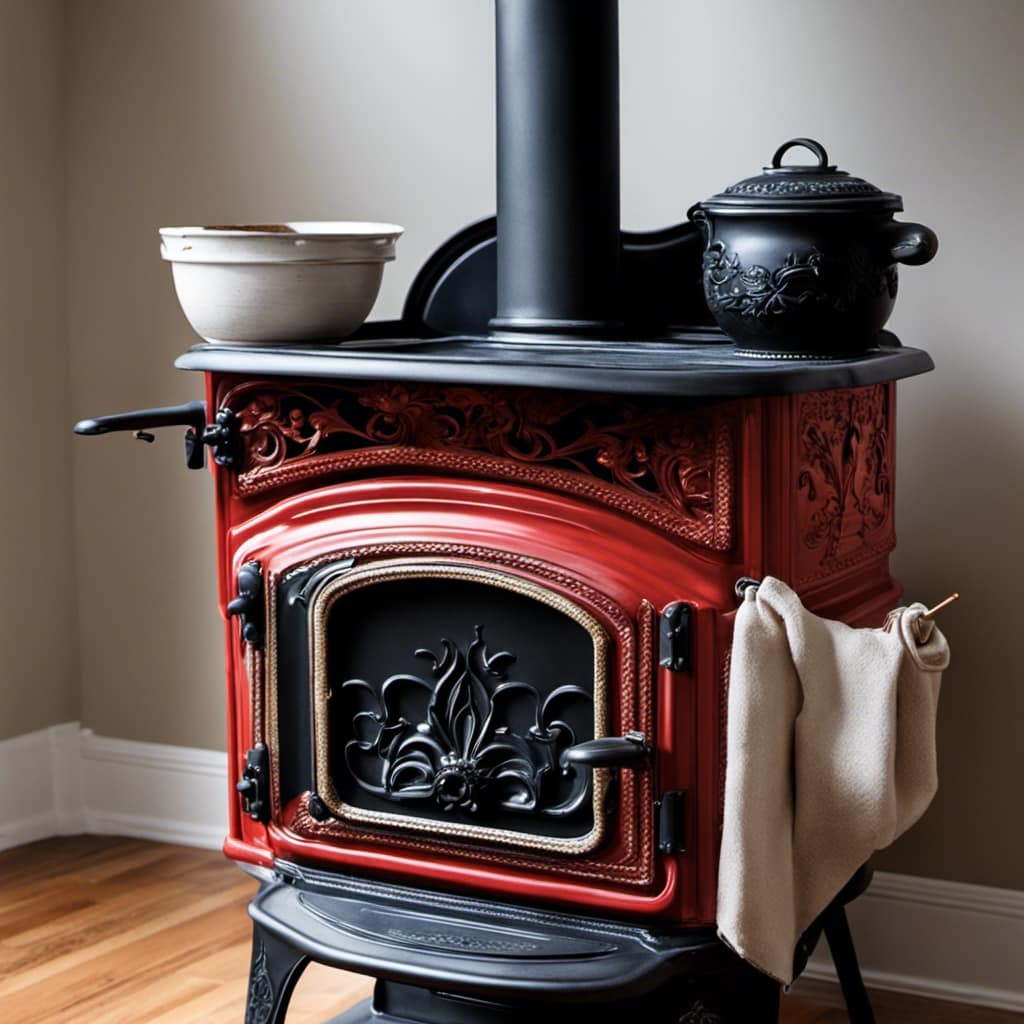
Can the Age of a Wood Stove Affect Its Compliance with Current Codes?
The peninsular wood stove age identification is crucial when assessing compliance with current codes. Older wood stoves may not meet the latest regulations, posing safety and environmental concerns. It’s important to verify the age of a wood stove to ensure it adheres to current standards for efficiency and emissions.
Frequently Asked Questions
What Are Some Common Signs That a Wood Stove May Not Be up to Current Code?
Common signs of a non-compliant wood stove include improper installation, lack of proper clearances, and outdated technology. Using a non-compliant wood stove can lead to safety hazards, increased risk of fire, and potential legal consequences.
Are There Any Specific Brands or Models of Wood Stoves That Are Known to Meet Current Code Requirements?
There are specific brands and models known to meet current code requirements for wood stoves. When comparing wood stove efficiency and emissions, it’s important to consider these factors to ensure compliance.
Can I Modify My Existing Wood Stove to Meet Current Code Requirements, or Do I Need to Purchase a New One?
I can modify my existing wood stove to meet current code requirements, but it may be easier to purchase a new one. It’s important to consult with a professional to ensure compliance with all regulations.
How Often Do Wood Stove Codes and Regulations Change, and How Can I Stay up to Date With the Latest Requirements?
Staying up to date with wood stove codes is crucial. Regular maintenance ensures safety and efficiency. Certified professionals play a vital role in proper installation. Keeping your stove code-compliant is essential for peace of mind.
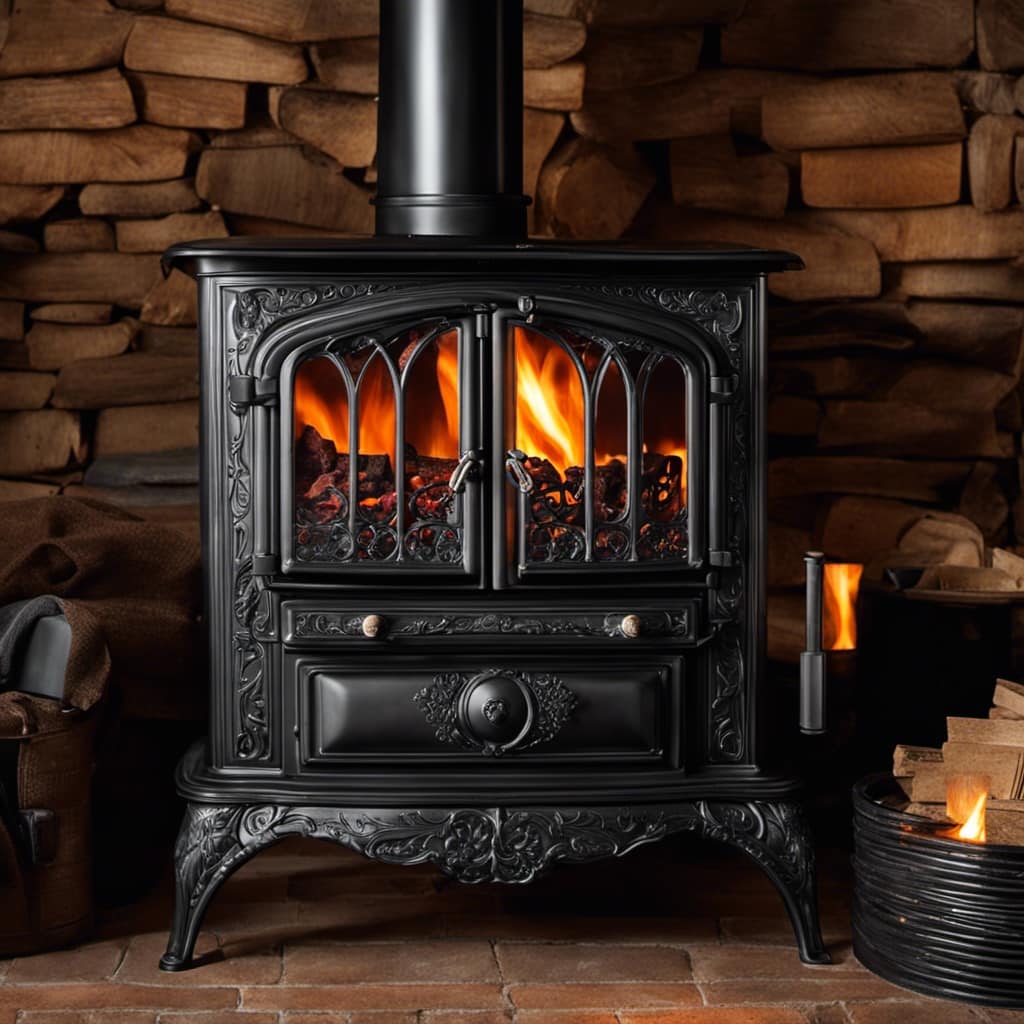
Are There Any Additional Safety Measures or Precautions I Should Take When Using a Wood Stove, Even if It Meets Current Code Requirements?
When using a wood stove, it’s important to take additional safety measures and precautions, even if it meets current code requirements. This includes proper ventilation, regular maintenance, and using the stove responsibly to prevent accidents and ensure the well-being of everyone.
Conclusion
In conclusion, ensuring that your wood stove is up to current code is crucial for safety and compliance.
By understanding code requirements, checking certification labels, evaluating clearance distances, considering emissions standards, and consulting with a professional inspector, you can confidently enjoy the warmth and comfort of your wood stove.
Just like a well-stacked pile of firewood, a properly regulated wood stove brings peace of mind and cozy ambiance to your home.
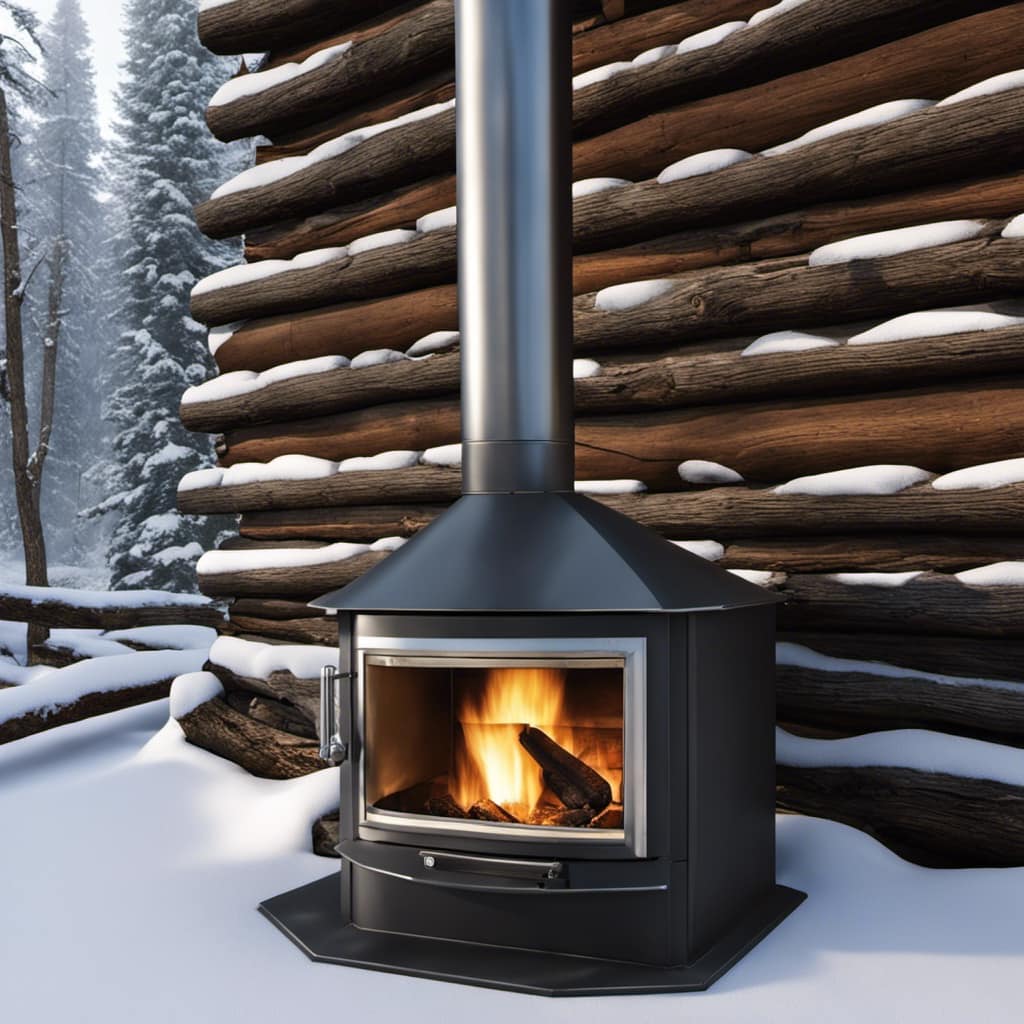
Growing up surrounded by the vast beauty of nature, Sierra was always drawn to the call of the wild. While others sought the comfort of the familiar, she ventured out, embracing the unpredictable and finding stories in the heartbeat of nature.
At the epicenter of every remarkable venture lies a dynamic team—a fusion of diverse talents, visions, and passions. The essence of Best Small Wood Stoves is crafted and refined by such a trio: Sierra, Logan, and Terra. Their collective expertise has transformed the platform into a leading authority on small wood stoves, radiating warmth and knowledge in equal measure.




